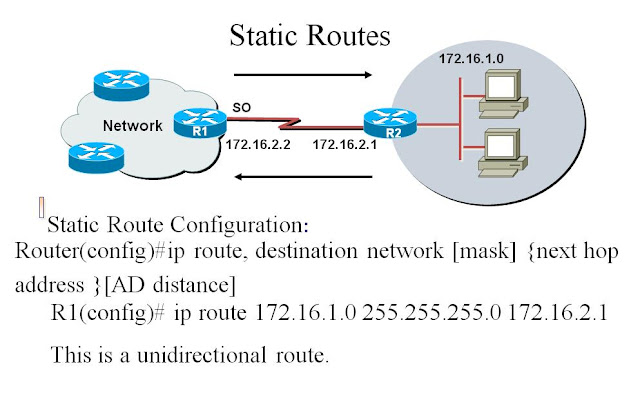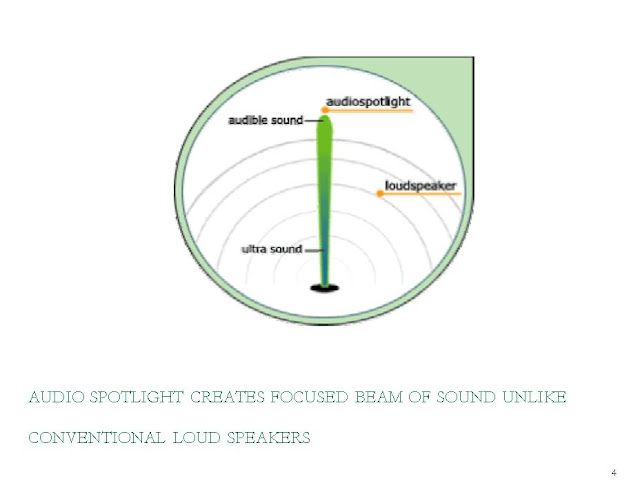Routing Protocols
ROUTING BASICS
The term routing is used for taking a packet from one device and sending it through the network to another device on a different network
For routing a router must know following things
Ø Destination address
Ø Neighbour routers from which it can learn about remote networks, Possible routes to all remote networks
Ø The best route to each remote network
Ø How to maintain and verify routing information
Ø They are the set of rules used by a router when it communicates routing information between neighboring router
Ø Routing protocols use metrics to evaluate what path will be the best for a packet to travel
Ø A metric is a standard of measurements; such as path bandwidth, reliability, delay, current load on that path etc; i.e used by routing algorithms to determine the optimal path to a destination.
Desirable properties of a router
• Correctness and simplicity: The packets are to be correctly delivered. Simpler the routing algorithm, it is better.
• Robustness: Ability of the network to deliver packets via some route even in the face of failures.
• Stability: The algorithm should converge to equilibrium fast in the face of changing conditions in the network.
While designing a routing protocol it is necessary to take into account the following design parameters:
• Performance Criteria: Number of hops, Cost, Delay, Throughput, etc
• Network Information Source: Local, Adjacent node, Nodes along route, All nodes
• Network Information Update Timing: Continuous, Periodic, Major load change, Topology change
If a network is not directly connected to Router then it must use one of the three ways
Ø Static routing
Ø Dynamic routing
Ø Default routing
Static Routing:
Uses a route that a network administrator enters manually add routes in each router’s routing table
ADVANTAGES
Ø There is no bandwidth usage between routers, which means you could possibly save money on WAN links.
Ø It adds security because the administrator can choose to allow routing access to certain networks only
DISADVANTAGE
Ø The administrator must really understand the internetwork and how each router is connected in order to configure routes correctly.
Ø It uses same protocol in two different networks
Ø Dynamic routing is when protocols are used to find networks and update routing tables on routers
Ø Uses a route that a network routing protocol adjusts automatically for topology or traffic changes
Ø In it a protocol on one router communicates with the same protocol running on neighbor routers
Ø If a change occurs in the network, the dynamic routing protocols automatically inform all routers about the event.
Default routing
Ø A default route is the network route used by a router when no other known route exists for a given IP packet's destination address.
Ø All the packets for destination Which not known by the router's routing table are sent to the default route
Ø The default route is the destination that a packet is sent to if the router doesn't have instructions to send it somewhere else
• It finds the best path to a remote network by judging distance.
• Each time a packet goes through a router, called a hop.
• The route with the least number of hops to the network is determined to be the best route
• Here each router send its complete routing table with each update only to its neighbors
RIP(Routing Information Protocol)
• RIP was first developed in 1969
• The most commonly used interior gateway protocol in the Internet
• Each router sends out a broadcast that contains the entire routing table of the router.
• Typically routers do this every 30seconds
• The maximum number of hops allowed with RIP is 15
• RIP version 1 uses only classful routing, which means that all devices in the network must use the same subnet mask.
• It does not send updates with subnet mask information
DRAWBACK of RIPv1
Ø Classful
Ø RIP routes consume more Bandwidth
RIPv2
• mostly same as RIP v1
• But It is classless, means RIP version 2 provides something called prefix routing and send subnet mask information with the route updates, this make RIPv2 more scalable than RIPv1
• It is a Cisco-proprietary distance-vector routing protocol
• Means that to use IGRP in your network, all your routers must be Cisco routers
• It was created to overcome the problems associated with RIP
• It has a maximum hop count of 255
• helpful in larger networks and solves the problem of 15 hops
• Metric used here are Bandwidth and Delay of the line by default as a metric for determining the best route to an internetwork
• The main difference between RIP and IGRP configuration is that when we configure IGRP, we supply the autonomous system number to it, where as RIP does not use autonomous number system
• Also called shortest-path-first protocols
• Routers here create three separate tables
Ø One of these tables keeps track of directly attached neighbors
Ø One determines the topology of the entire internetwork
Ø One is used as the routing table
Ø Link-state routers know more about the internetwork than any distance-vector routing protocol
OSPF(Open Shortest Path First )
• Also called route redistribution
• It is used when a network have multiple routers and not all of them are of same vendor
FEATURES:
Ø Has unlimited hop count
Ø Allows multi-vendor deployment (open standard)
Ø Consists of areas and autonomous systems Minimizes routing update traffic Allows scalability
Ø Supports VLSM( Variable Length Subnet Masks )
• Designed in a hierarchical fashion, which basically means that you can separate the larger internetwork into smaller internetworks called areas
• Reasons for creating OSPF in a hierarchical design
Ø To decrease routing overhead
Ø To speed up convergence
Ø To confine network instability to single areas of the network
HYBRID ROUTING PROTOCOL
Routing protocol that uses the attributes of both distance-vector and link-state. Enhanced Interior Gateway Routing Protocol (Enhanced IGRP).
• Enhanced InteriorGateway Routing Protocol (EIGRP)
• EIGRP is a classless
• It is enhanced distance-vector protocol that gives us a real edge over another Cisco proprietary protocols
• uses the concept of an autonomous system to describe the set of contiguous routers that run the same routing protocol
• It includes the subnet mask in its route updates.
• subnet information allows us to use Variable Length Subnet Masks (VLSMs) and summarization when designing the networks
• it synchronizes routing tables between neighbors at startup and then sends specific updates only when topology changes occur
FEATURES
Ø It has a maximum hop count of 255
Ø Support for IP and IPv6 (and some other useless routed protocols) via protocol dependent modules
Ø Support for summaries and discontiguous networks Efficient neighbor discovery
Ø Communication via Reliable Transport Protocol (RTP)
Ø Best path selection via Diffusing Update Algorithm (DUAL)
Ø Support for IP and IPv6 (and some other useless routed protocols) via protocol dependent modules
Case Study: Smart Edge Router 800
Features
• The SmartEdge router provide following features:
• High performance—Enables line-rate packet forwarding.
• Robustness—Enables packet reliability, meeting rigorous uptime and availability requirements.
• Scalability—Supports a large number of access terminations.
• Flexibility—Provides support for multiple services.
Routing Protocols Used
Ø Routing Information Protocol (RIP)
Ø Enhanced Interior Gateway Routing Protocol (Enhanced IGRP).
Ø Open Shortest Path First (OSPF)and OSPF Version 3 (OSPFv3)
Ø Virtual Private Networks (BGP/MPLS VPNs
Ø Smart Edge 800 Router Hardware provides site preparation information and installation, monitoring, and maintenance procedures for the chassis and cards
• The Smart Edge 800 delivers 240Gbps of throughput
• Deliver Multi-Play services such as video (IPTV/HDTV), voice, data, interactive multimedia content, in addition to Layer 2/Layer 3 Virtual Private Networks (VPNs)








Comments